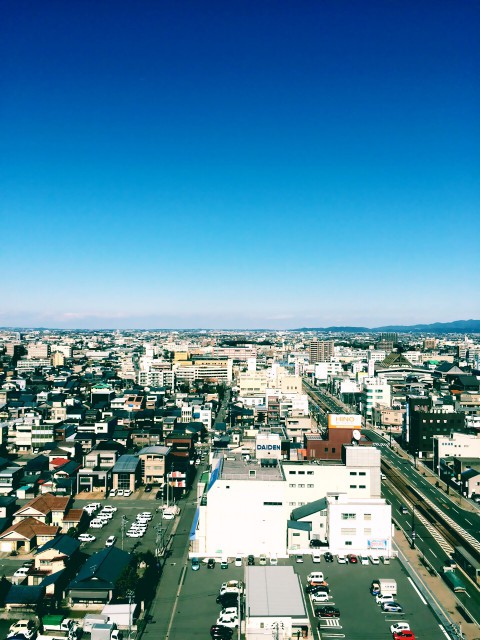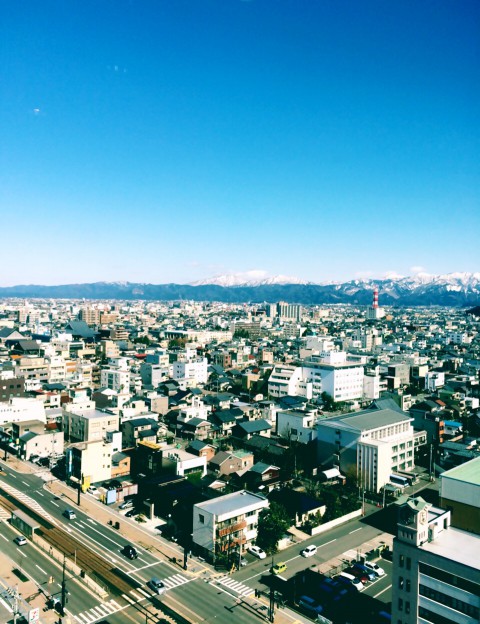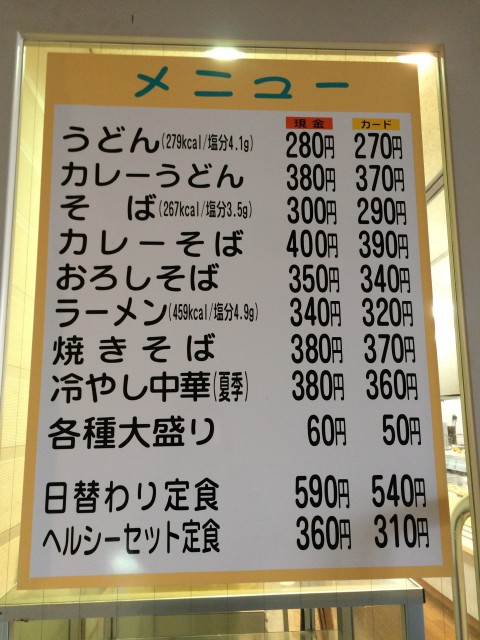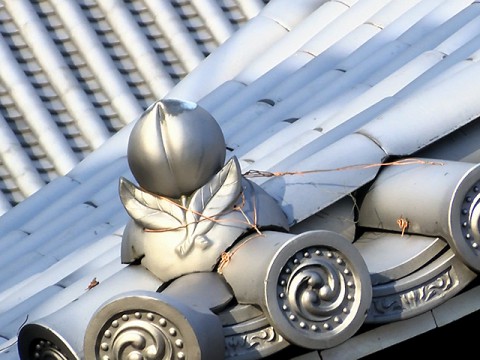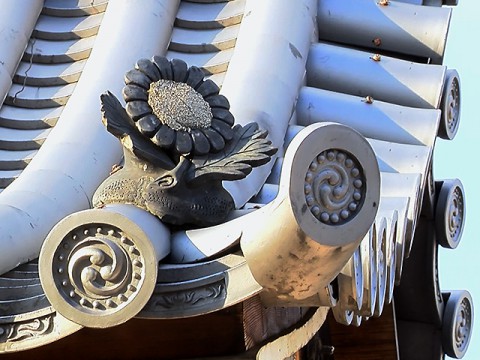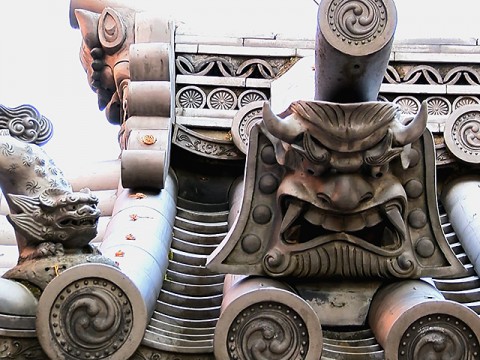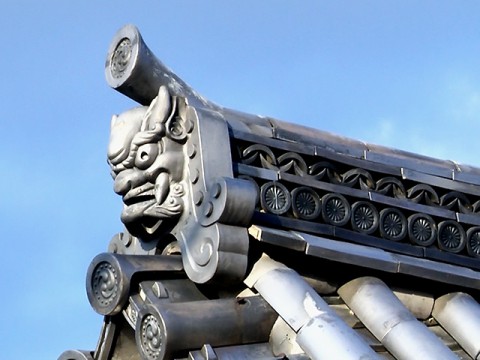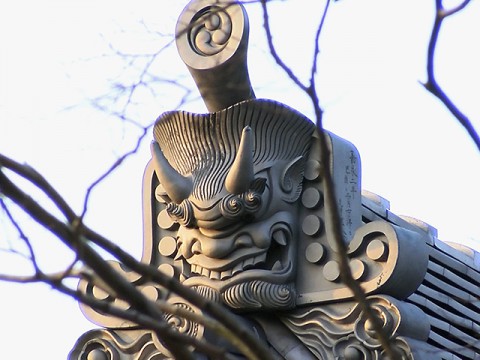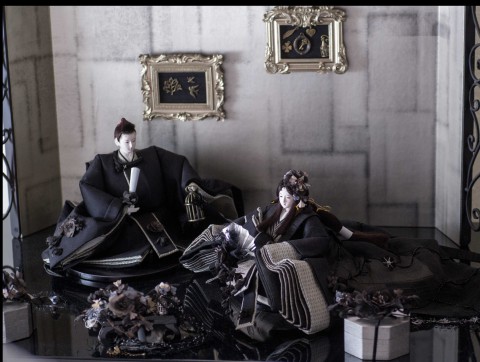“Oikemono”, the Shinto Ritual at Kamo Shirne in Obama City
2016.02.23
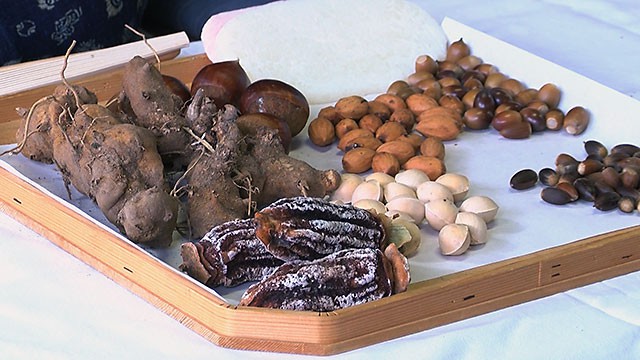
“Oikemono”, a Shinto ritual was held at Kamo shirine in Obama City in Fukui Prefectrue today.
It is Tuesday today. The day of the week for this event keeps changing every year because the event is always held on Januray 16th of the lunar calendar (old calendar).
Oikemono is a very rare Shinto ritual. It is a divination of crop prospects for the year.
First, nuts are put into a box and buried in soil.
Next, after a year later, the box is dug up out of the ground and opened.
And finally, they find the crop prospects of the year by checking how the nuts and fruits in the box are germinated.
For this Shinto ritual, there are seven kinds of seeds (Oikemono) to bury which are acorns, chinquapins, “tokoro”(Dioscorea Tokoro), chestnuts, ginkgo nuts, “Japanese nutmegs” and persimmons.
In ancient times, I think that all of these seeds used to be valuable foods which people could get in everyday life.
From this event, I felt the old ways of Japanese living and the origin of Japanese religious beliefs.
I personally like Japanese nutmegs because they remind me of my childhood.
I used to like roasting and eating them.
At ten in the morning, the event started.
They started putting these Oikenomono (nuts and other seeds) into a wooden box called “Mainobako” (Maino means burying and Bako means box in Japanese) with flatted oval-shaped rice cakes (you can see it in the back of this picture) called “Ushi no Shita” (Ushi means cow and Shita means tongue).
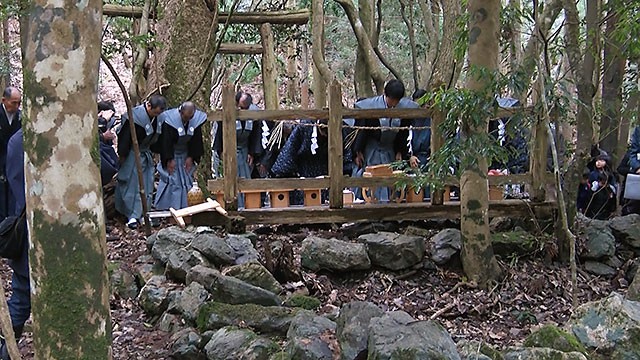
First, the new box was offered to a god at "Honden" (main sanctuary)
and then it was offered to a god at "Uenomiya".
Finally, the box was placed at the area where it was buried.
After praying at the Uenomiya, as people shouted “Hyakumangoku!” (a million bushels),
they scattered “Hana mochi” ( small pieces of rice cakes which considered as one of the lucky charms in Japan) for visitors.

On their way to Uenomiya from Honden,
they had “Yumi uchi” (shooting an arrow), and he targeted the target made it look like a large snake.
They had another Yumi uchi once more after praying at Uenomiya.
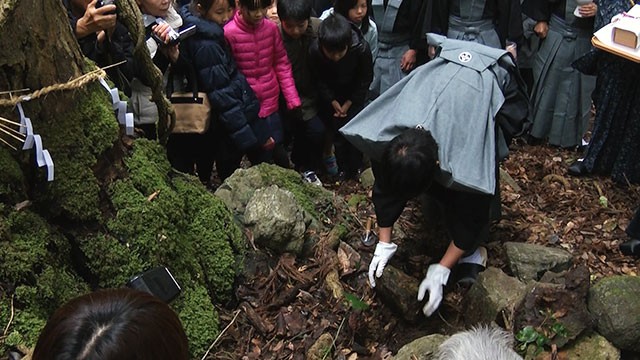
The maino bako (box) was dug out from the root of sacred tree.
After that, the new box you see in the upper right corner of the picture was buried into the same hole.
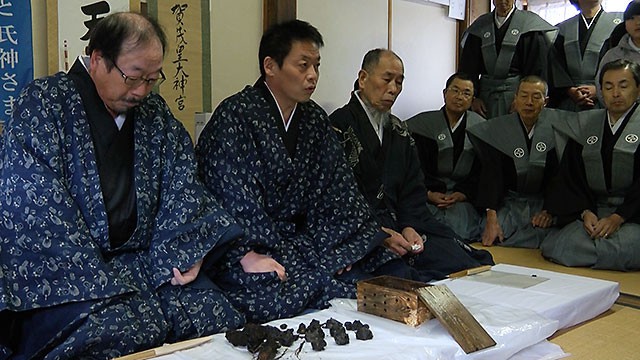
Judgement introducers observed the seeds which were dug out carefully.
And then they announced everyone at the shrine the result stoutly.
The result they announced was “We will have an abundant crop this year as well as last year”.
Congratulations!
At 11:30am, Oikemono, the Shinto ritual was finished.
T.S


